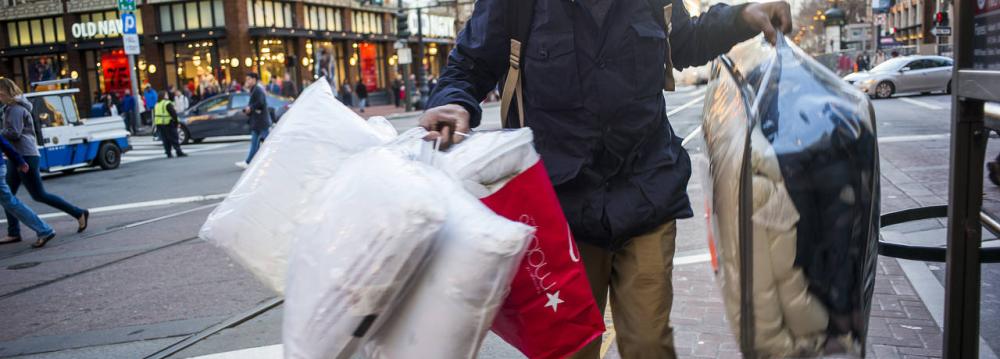US consumers are finally following the script, and maybe this time they won’t stray from the role that economic fundamentals have assigned them.
Consumer spending in May, reported last week, tacked on gains that built on April’s surge. Even if growth of real consumer spending in June slowed to half of May’s rate, real consumption will rise by an annualized 4.4% in the second quarter, a 10-year peak, with growth of overall gross domestic product probably running at 3.5%, Barrons reported.
In light of the consumer’s dismal showing in the two prior quarters, this rebound is long overdue. Since mid-2014, the fundamentals have been signaling a 3%-to-3.5% yearly increase in real consumption. A happy combination of strong gains in wages and salaries—and weak gains in the cost of necessities such as food and energy—has freed up funds to spend on other items. The rise in housing wealth has lent support, while the stock market, for all its faltering, hasn’t detracted from consumption.
From third-quarter 2014 through third-quarter 2015, consumers began to behave as expected. Despite the usual volatility, the four-quarter average of consumer-spending growth ran from 3% to 3.4%.
That changed abruptly in 2015’s last quarter. The four-quarter advance in real consumer spending fell to 2.7%, and through the first quarter of this year, to 2.6%. Consumers have fallen so far into habits of thrift that a rebound to 4.4% in the second quarter would still leave four-quarter growth at just 2.8%.
Improper Forecast
Needless to say, the predictive value of the fundamentals is sometimes flawed. And from a prescriptive point of view, consumers should probably be saving more and spending less, anyway. But they probably won’t. Expect growth of real consumption to top 3% in 2016.
The expansion of the past seven years has been the slowest on record. Tariff-loving types might therefore expect the trade deficit to have hit new highs over that stretch. But it actually has narrowed to 3.3% of real GDP, much less than the 4%-to-5.5% share during the expansion of 2002-07, when economic growth ran faster.
In 2015, the US excess of goods-and-services imports over exports was $543.4 billion in constant dollars, down from a 2006 peak of $794.3 billion. The gap has narrowed because the real value of exports from 2006 through 2015 soared by 40%, versus a 15.3% rise for imports.
Another anomaly: The trade deficit’s major deterioration occurred when it ballooned from 1% of GDP in 1995 to nearly 4% by 2000. Given the mechanics of GDP accounting, in each year the rising deficit subtracted an average of seven-tenths of a percentage point from calculated growth. Yet overall economic growth over those five years was among the best on record.


